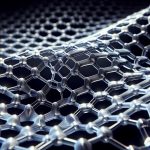When you consider engineering fabrics for best performance, it's essential to understand how material science and design expertise come together to create textiles that excel in various applications. You might wonder how engineers enhance durability, flexibility, breathability, and moisture-wicking capabilities in these fabrics. By incorporating advanced materials like graphene and aramid fibers, they push the boundaries of textile functionality. Curious about how these innovations are reshaping industries from sportswear to aerospace? Let's explore the ongoing research and development that make these advancements possible and see how they're revolutionizing textile design.
Table of Contents
Key Takeaways
- Advanced materials like graphene and aramid fibers enhance fabric strength, durability, and performance.
- Moisture-wicking and quick-drying properties in sportswear improve comfort and athletic performance.
- 3D knitting and conductive threads enable the creation of smart textiles with embedded sensors and adaptive functionalities.
- Lightweight carbon fiber composites in aerospace fabrics optimize safety, performance, and fuel efficiency.
- Sustainable textiles using recycled and bio-based fibers reduce environmental impact while maintaining high performance standards.
The Science of Textile Engineering
The science of textile engineering combines material science and innovative design to create high-performance fabrics. Understanding textile properties is essential if you want to master this field. You'll need to explore the intricacies of fibers, yarns, and fabric structures. Each component contributes to the final product's durability, breathability, and flexibility.
Design engineering plays a critical role in bringing these fabrics to life. By utilizing advanced design tools and techniques, you can manipulate textile properties to meet specific performance criteria. Whether you're aiming for moisture-wicking, thermal insulation, or enhanced tensile strength, the right design choices make all the difference.
Material science forms the backbone of performance textiles. It's where you'll investigate the molecular structure of fibers to understand how they interact under various conditions. This knowledge allows you to anticipate and enhance fabric behavior in real-world applications. For instance, integrating nanoparticles can result in fabrics that are both lightweight and incredibly strong.
Advanced Materials in Fabrics
Building on the principles of textile engineering, you'll find that cutting-edge materials like graphene, aramid fibers, and smart textiles revolutionize fabric performance. Graphene, renowned for its robustness and conductivity, is integrated into fabrics to create high-performing textiles that are both durable and lightweight. Aramid fibers, known for their exceptional heat resistance and strength, are essential in creating protective clothing for high-risk professions.
Smart textiles, equipped with nano fiber applications, offer functionalities like temperature regulation, moisture management, and even health monitoring. These materials contribute to the development of intelligent clothing that adapts to the wearer's needs, enhancing comfort and performance.
| Advanced Material | Key Benefit |
|---|---|
| Graphene | Robustness and conductivity |
| Aramid Fibers | Heat resistance |
| Smart Textiles | Adaptive functionalities |
Moreover, the shift towards sustainable materials in fabric engineering is undeniable. Innovations like recycled polyester and bio-based fibers are not only eco-friendly but also maintain the integrity of high-performing fabrics. By incorporating these sustainable materials, you contribute to a more sustainable future while achieving peak performance.
Incorporating advanced materials into your textile designs ensures that you're at the forefront of innovation, crafting fabrics that meet the highest standards of performance and sustainability.
Innovative Fabric Technologies
In today's textile industry, cutting-edge technologies like 3D knitting and conductive threads are redefining fabric capabilities. You can now witness the emergence of sustainable fibers that not only minimize environmental impact but also offer exceptional performance. These fibers are engineered to be biodegradable and recyclable, making them ideal for eco-conscious applications.
Smart textiles are another groundbreaking innovation. These fabrics are embedded with sensors and electronic components, enabling them to monitor, react, and adapt to environmental changes. Imagine a shirt that can track your essential signs or a jacket that adjusts its temperature based on your surroundings. The potential for smart textiles in medical applications is immense, offering real-time health monitoring and even drug delivery systems.
Protective gear is also benefiting from these technological advancements. Fabrics designed with advanced materials can provide enhanced protection against extreme conditions, whether it's for firefighters, military personnel, or industrial workers. These materials aren't only durable but also lightweight, ensuring comfort without compromising safety.
Applications in Sportswear
When you're selecting sportswear, consider fabrics with moisture-wicking technologies that keep you dry and comfortable during intense workouts.
You'll also benefit from compression features that enhance muscle support and improve circulation.
These engineered fabrics guarantee peak performance and quicker recovery times.
Moisture-Wicking Technologies
Moisture-wicking technologies keep athletes comfortable by effectively drawing sweat away from the skin. When engaging in intense physical activity, sweat absorption becomes essential for maintaining comfort and performance.
These advanced fabrics excel at pulling moisture from your skin and dispersing it across the fabric's surface, where it can quickly evaporate. This process not only enhances thermal regulation but also prevents the build-up of sweat, which can lead to chafing and discomfort.
In addition to their sweat absorption capabilities, these fabrics are engineered to be highly breathable. This breathability ensures that air can circulate freely, further aiding in the cooling process.
The quick-drying properties of moisture-wicking materials mean that even during the most vigorous workouts, your gear remains light and dry, enabling you to focus on your performance rather than on your clothing.
Compression Benefits
While moisture-wicking fabrics keep you dry, compression garments offer support and enhance blood circulation during physical activities. By integrating advanced compression technology into athletic wear, you can greatly enhance your performance. Compression garments are meticulously designed, using innovative fabric construction that targets specific muscle groups. This precise design not only supports your muscles but also reduces fatigue and the risk of injury.
When you wear compression gear, you'll notice improved blood flow, which expedites the removal of lactic acid and reduces muscle soreness. This is particularly beneficial during intense workouts or long training sessions. The performance benefits extend beyond immediate support; they also include faster recovery times, allowing you to train harder and more frequently.
The fabric construction of compression garments involves a blend of spandex and other high-stretch materials that provide a snug fit without restricting movement. This ensures that you maintain peak flexibility while benefiting from the support. Whether you're a professional athlete or a fitness enthusiast, incorporating compression technology into your athletic wear can lead to measurable improvements in your overall performance. Embrace this advanced gear to elevate your training and achieve your fitness goals.
Aerospace Industry Innovations
In aerospace, engineering fabrics play a key role in enhancing both safety and performance. When you're venturing into space exploration, the materials you choose can make or break your mission. Lightweight materials are necessary for reducing payload costs while maintaining structural integrity. Advanced fabrics like carbon fiber composites aren't only light but also incredibly strong, enabling spacecraft to withstand the harsh conditions of space.
You can't ignore the importance of aerodynamics either. Streamlined designs are essential for minimizing drag and improving fuel efficiency. Specialized engineering fabrics with aerodynamic properties help achieve these goals. They reduce air resistance and, consequently, the energy required for flight. This is particularly important for long-duration missions where every ounce of fuel counts.
Protective coatings are another game-changer. These coatings are applied to fabrics to shield them from extreme temperatures, radiation, and micrometeoroids. For instance, thermal blankets made from multi-layer insulation fabrics keep spacecraft instruments at best temperatures, ensuring they function correctly.
Enhancing Everyday Life
From athletic wear to home furnishings, engineering fabrics are revolutionizing the way we live our daily lives. Imagine slipping into a shirt that not only fits perfectly but also monitors your heart rate and adjusts to your body temperature. Smart textiles, incorporating wearable technology, make this possible. These fabrics provide real-time data, enhancing your performance and comfort.
Sustainable textiles are another game-changer. By opting for materials with a reduced environmental impact, you're not just choosing high performance but also contributing to a greener planet. These fabrics utilize recycled materials, reduce water consumption, and minimize waste.
Consider how these advancements touch various aspects of your life:
- Fitness Apparel: Gear embedded with sensors to track your essential signs and optimize your workouts.
- Home Furnishings: Curtains that adjust transparency based on light levels, enhancing energy efficiency.
- Everyday Clothing: Shirts and jackets that can regulate temperature, ensuring comfort in all weather conditions.
The integration of smart textiles and sustainable textiles is transforming mundane items into high-performance tools. By embracing these innovations, you're not only enhancing your daily life but also making a positive environmental impact. The future of fabric engineering is here—are you ready to upgrade?
Frequently Asked Questions
What Environmental Impacts Are Associated With Producing High-Performance Fabrics?
Oh, you thought high-performance fabrics were eco-friendly? Think again. Producing them comes with a hefty carbon footprint. While sustainability initiatives are in place, the environmental impact remains significant. So much for guilt-free innovation, right?
How Can Engineered Fabrics Be Recycled or Repurposed?
To recycle engineered fabrics, you can employ advanced recycling methods like chemical recycling or mechanical shredding. For repurposing techniques, consider upcycling into new products or using the materials in creative, sustainable ways.
What Are the Cost Implications of Using Advanced Textiles in Consumer Products?
Imagine traversing a maze of numbers. You'll find the cost analysis and market trends show advanced textiles are pricey. However, consumer preferences and innovation strategies often justify these costs, promising long-term gains and market leadership.
How Do Engineered Fabrics Compare in Durability With Traditional Materials?
When comparing durability, you'll find that engineered fabrics outperform traditional materials by a large margin. Innovation in textiles has led to performance materials that resist wear and tear better, ensuring longevity and superior durability in everyday use.
Are There Any Health Risks Linked to Wearing Synthetic Engineered Fabrics?
Just as Achilles had his heel, you might face allergies or irritations from synthetic fabrics. Skin reactions can occur, but choosing options with better breathability reduces risks. Always prioritize comfort and skin health in your choices.
- How Does Ring Spun Cotton Affect Garment Fit and Shape Retention? - August 13, 2024
- What Are the Challenges in Producing Ring Spun Cotton? - August 13, 2024
- Is Ring Spun Cotton Suitable for Plus-Size Clothing? - August 13, 2024







